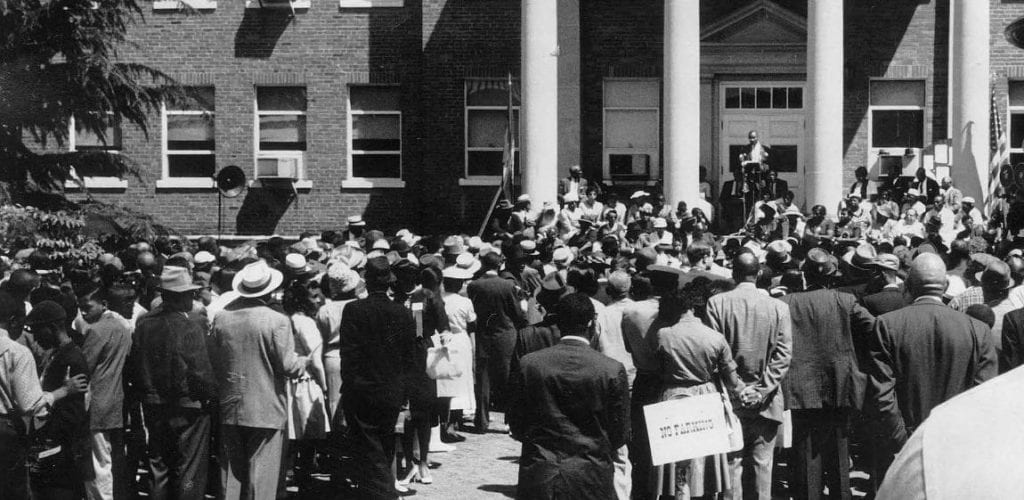One of the first major civil rights campaigns began in Prince Edward County, Virginia. On April 23, 1951, a 16-year old student at Moton High School named Barbara Rose Johns led her classmates on a walkout to protest inadequate facilities at the school. This action gained the attention of the NAACP, who took up the cause and eventually brought the case to the Supreme Court along with other cases, which became the famous Brown vs. Board of Education of Topeka ruling.
But what was the history of civil rights and education for African Americans? How America, and especially Prince Edward County, Virginia, get to a place where it was acceptable for black students to have inadequate learning facilities?
A Brief History of Civil Rights and Education
After the abolition of slavery during the American Civil War, three amendments to the constitution were passed granting African Americans their freedom, citizenship, and the right to vote. However, during Reconstruction, the South did all it could to nullify the rights given to blacks. From 1873 to 1883, the Supreme Court handed down decisions that reduced the rights of black considerably.
Nearly every public facility separated blacks from whites, including transportation, restaurants, and public schools. In 1896, the Supreme Court sanctioned separation in Plessy vs. Ferguson, which held that separate but equal facilities for blacks and whites were constitutional.
But as many students realized, their facilities were hardly equal to those of their white contemporaries.
Events Leading Up to the 1951 Moton High School Walkout
Since the 1930s, the NAACP had been working towards the desegregation of public schools across America. Their strategy was to bring local lawsuits to the courts and argue that separate but equal wasn’t equal at all; all students, regardless of race, deserve an education.
In Prince Edward County in April 1951, Barbara Rose Johns led the strike against Moton High School, which drew the attention of NAACP attorneys Spotswood Robinson and Oliver Hill. The lawyers met with students and community leaders and eventually filed suit in Richmond, Virginia, over the issue of school segregation. In November of that same year, students from Adkin High School in North Carolina also protested against inadequate facilities. These and other actions were eventually rolled into one case, Brown versus Board of Education of Topeka, which went to the Supreme Court in 1954. The court judged that state laws declaring separate but equal facilities were unconstitutional, which led to the desegregation of schools.
